The Criminal Acts of Tod Slaughter on Blu-ray from Indicator
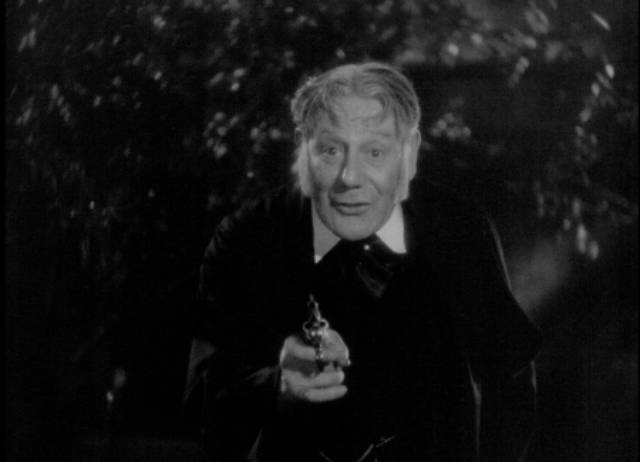
What’s in a name? Most don’t evoke any particular impression before you meet the person, but some conjure up such a strong image that you have to believe they were bestowed with a purpose. Hearing the name Tod Slaughter and knowing that he was an actor who specialized in Victorian-style melodramas, on both stage and screen, it seems like a joke, a stage name deliberately chosen to convey an outsized image of villainy. Strange, then, to learn that the stage part of the name was Tod and not Slaughter. Born in 1885 as Norman Carter Slaughter, Tod was a very successful stage performer, initially performing the young hero before evolving into the larger than life villain he’s now known as from a series of movies he made in the 1930s.
I long had an impression of Slaughter as something of a joke – that name! – a ham around which creaky old theatrical works revolved in cheap, throwaway movies made at the height of the quota quickie era which (rather like the Canadian tax shelter system of the 1970s and ’80s) required that a certain number of movies screened in British theatres had to be made in Britain, a policy which encouraged endless small, cheap, disposable movies which arrived with little critical respect and, for the most part, quickly disappeared. The fact that this system served as a training ground for numerous filmmakers who went on to long (if not always illustrious) careers – Michael Powell, for instance – can’t quite take the perceived curse off low-budget British movies from the ’30s, generally aimed directly at “unsophisticated” provincial audiences.
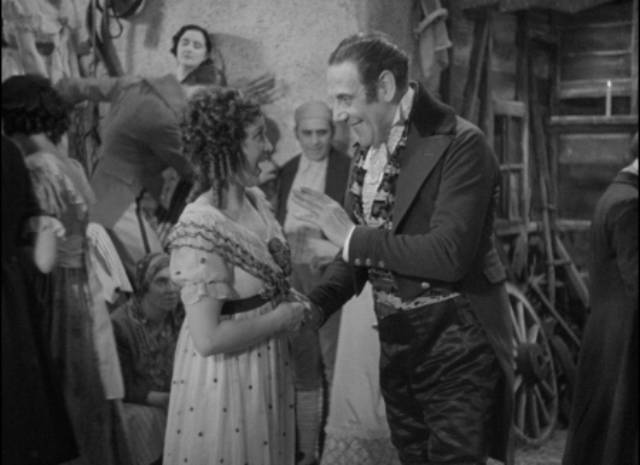
This impression seemed to be at least partially confirmed when I finally saw The Face at the Window (1939) a few year ago. But it turns out that there was more to Slaughter – and quota quickies – than I thought, with Indicator’s new box set The Criminal Acts of Tod Slaughter proving to be something of a revelation. The eight horror-tinged melodramas in which Slaughter starred between 1935 and 1940 do display the signs of very small budgets and rushed production, but they also show a great deal of wit and imagination, perhaps more apparent now than when they were first released. Back in the ’30s, everything about them seemed dated, rooted as they were in 19th Century theatrical melodrama and Victorian morality.
But the image they present of Slaughter belies the three previous decades he had spent as an actor and manager on stage. While he had been drawn to the old melodramas during his stage career, he had generally played the hero and romantic lead, when he wasn’t appearing in comedies. He had almost single-handedly revived the old melodramas, drawing enthusiastic audiences (and critics) to a number of theatres on the fringes of London and out around the country on tour, providing thrills and establishing a complicity with those audiences who revelled in the clash of innocence and villainy which reflected a seemingly less complicated time.
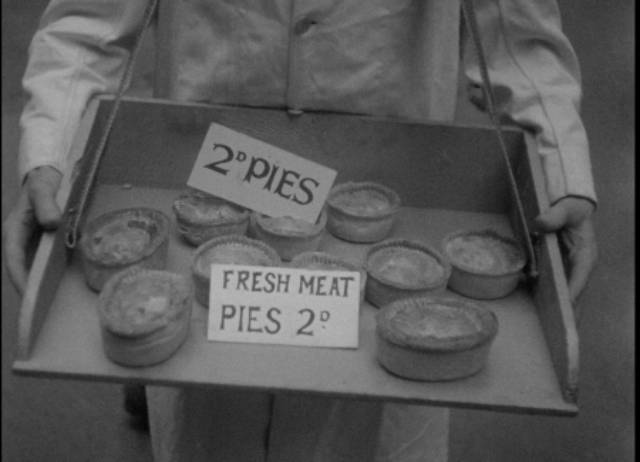
It was only in the late ’20s, as he approached middle age, that Slaughter finally took on the villainous roles, repeating some of them in BBC radio broadcasts, becoming associated with them just as audiences (and critics) were losing their taste for such entertainment. Others began to treat these plays as camp, and audiences now came to mock rather than embrace them. But as this shift took place, the demands of the 1927 Cinematograph Films Act, which established the notorious quota, spurred the furious production of cheap movies with an emphasis on comedies and thrillers. One of the most prolific and successful makers of the quickies, George King, who had been producing and/or directing since the beginning of the decade, approached Slaughter with the idea of putting some of his most successful theatrical revivals on screen. The offer came at just the right time, as the actor’s stage career was faltering.
With the recent success of Universal Studios’ horror movies, there was a proven audience and it seemed natural for Slaughter to lean into villainy, making him something of the English equivalent of Boris Karloff and Bela Lugosi. The catch was that the censors were already cracking down on horror as a form of entertainment – they’d even established a separate classification with the H (for Horror) certificate and a tightening of what was permissible on screen, far less tolerant than what had been allowed on stage, where bloody murder and retribution were depicted with gusto.
*
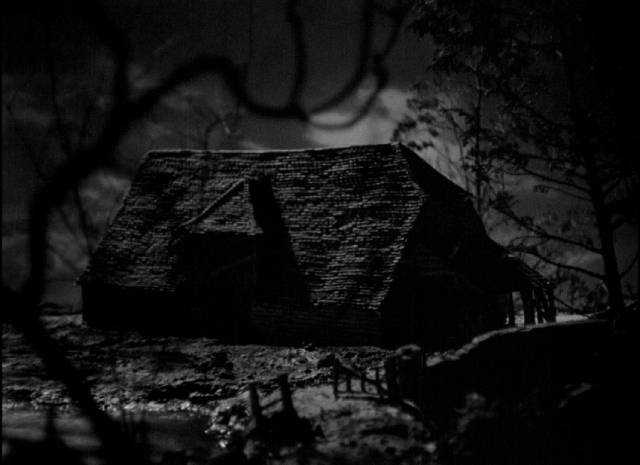
Maria Marten, or the Murder in the Red Barn (Milton Rosmer, 1935)
Slaughter’s first big stage revival had been Maria Marten, or the Murder in the Red Barn in 1927, partially mounted in response to the rising popularity of cinema. Initially intended to fill a gap in the repertory schedule, it proved so popular that it was held over for an extended run. So it seemed an obvious choice for Slaughter’s first screen outing, although he had not originally played the villain, Squire Corder. The play, one of many on the same subject staged during the 19th Century, was based on a notorious real-life murder, though the actual facts were quickly reworked to provide a satisfying, clear-cut moral, by transforming village girl Maria into a virginal innocent who falls victim to the depredations of a corrupt aristocrat – in reality, she was a sexually active woman who had already given birth at least once before becoming pregnant with Corder’s child, an inconvenience which prompted him to kill her and bury the body in the red barn.
On stage, Slaughter had played the supporting role of simple labourer Timothy Winterbottom, but in the film he became Corder and quickly established his image as a villain who revels in his own bad behaviour. This transformation was put into the hands of Milton Rosmer, an actor and director with more experience than producer King himself and, despite limited resources, the results are atmospheric and tonally complex. The film, made in 1935, is self-aware about its melodramatic excesses and Slaughter himself invites the audience to share his pleasure in villainy, but there’s no hint of mockery or condescension.
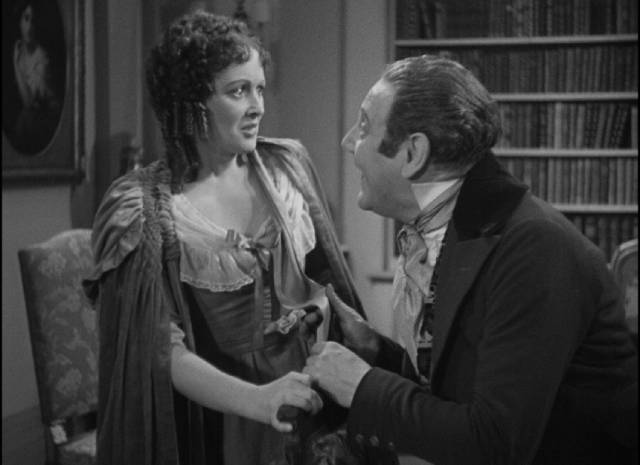
A prologue establishes the terms by which cast and audience will enter a particular conceptual space in which, for the duration, everyone will take the archetypes and exaggerations of the story seriously, taking pleasure in a dated style of drama rather than looking down on it with disdain. It begins with a master of ceremonies on stage, in front of a painted backdrop, who announces the spectacle about to unfold and introduces the cast of characters. We are, this tells us, to place ourselves in the position of a Victorian theatre audience to whom recent horrific events will be presented for our moral edification.
From this stage, we are transported to the barn where a festive village dance is underway. Rosmer quickly and efficiently establishes all the characters and the layered class positions they all occupy. There’s Squire Corder, smug and condescending and easily tricking the simple Timothy (Gerard Tyrrell) out of sixpence – a trifle for Corder, but a significant sum for the labourer; there’s stern farmer Thomas Marten (D.J. Williams) and his daughter Maria (Sophie Stewart); there’s the gypsy Carlos (Eric Portman in his first screen role); and a gypsy fortuneteller (Stella Rho), who causes a disruption when Corder insists that she read his palm and she tells him she sees his ignominious death.
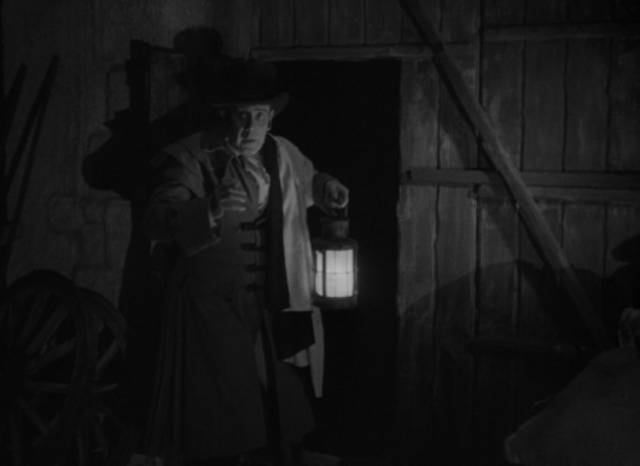
The plot’s trajectory is quickly laid out as we see that Carlos and Maria are in love, that her father has contempt for the gypsy, and that Corder has his eye on her. After the disruption at the dance, Corder invites Maria to visit him and she naively sneaks off to his mansion, having lied to her parents about where she’s going. Corder easily seduces her with his “fine manners” and a bit of wine. Although the censors wouldn’t allow anything explicit, what happens is quite clear; after cutting to her parents as they worry about where she is, we return to the Squire’s living room with Maria looking traumatized and the irritated Squire saying that her reaction doesn’t reflect well on him – there can be no doubt that the seduction was consummated and Maria is no longer a virgin.
When farmer Marten discovers that his daughter is pregnant, he immediately suspects Carlos and kicks her out of the house. With nowhere else to go, she goes to Corder expecting him to marry her. But he’s already planning to marry a wealthy spinster, whose fortune he needs to cover his debts, so on the pretext of setting Maria up as his mistress in London, he lures her to the barn, killing and burying her. With her disappearance, suspicion immediately falls on Carlos and with the authorities in pursuit he hides in the barn. It’s Corder’s own hunting dog which reveals Maria’s grave, leading to what would become something of a signature climax for Slaughter’s movies; exposed, the Squire succumbs to madness, trying to hold off a group of accusers with his pistol before being overcome.
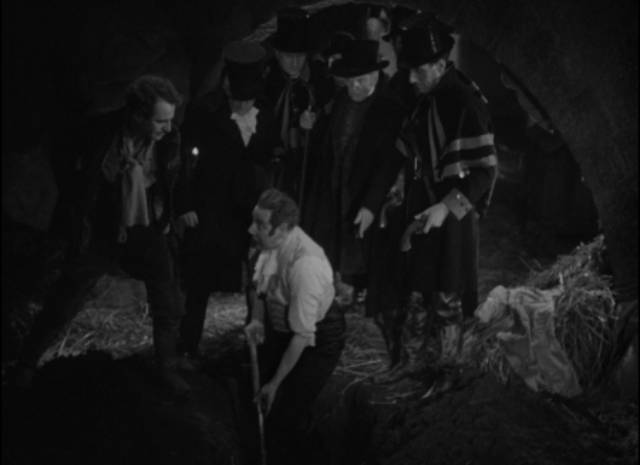
Awaiting execution in prison, believing his fate is delayed by the hangman not being available, he finds that a substitute has been found – none other than Carlos, who has volunteered in order to get retribution for the murder of the woman he loved. Although the execution had been shown on stage, with the actor dropped through a trapdoor at the end of a rope, this was forbidden on screen and as Corder is placed on the gallows, it cuts to a close up of a drum and fades out on the drum roll signalling the moment of death.
King surrounded Slaughter with a strong cast of character actors and relative newcomers who provide a context and consistent tone within which the star’s larger-than-life performance seems natural. Although in no way realistic, the film doesn’t feel stage-bound; it’s theatrical in an organic way, the heightened emotions possessing an authenticity which is perhaps more typical of the stage than the screen, yet works surprisingly well here. The design of the studio sets is rich and detailed, with George Stratton’s cinematography imbuing the story with a dense Gothic atmosphere (in this, the film seems to prefigure the Gothic horrors of Hammer two decades later, in which again design and photography belie budgetary limitations).
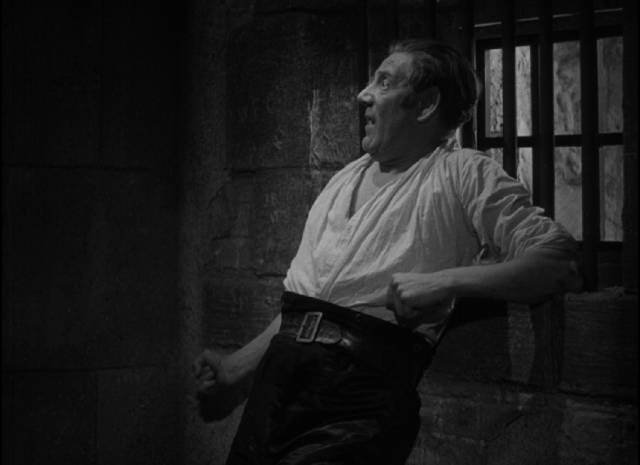
But most important is Slaughter himself, who accomplishes the fascinating feat of balancing the script’s melodramatic excesses with a knowing nod to the audience which, rather than undermining the effect, heightens engagement. Slaughter’s enthusiasm for Corder’s villainy is enhanced by an ability to express every nuance with precision and clarity; his large, rather droopy features (he reminds me of Tenniel’s illustrations for Lewis Carroll’s “The Walrus and the Carpenter”) are capable of conveying every thought and fleeting emotion, all of which he shares openly with the audience while concealing his true intentions from the other characters. It’s a remarkably subtle performance within a context which is the antithesis of subtlety.
*
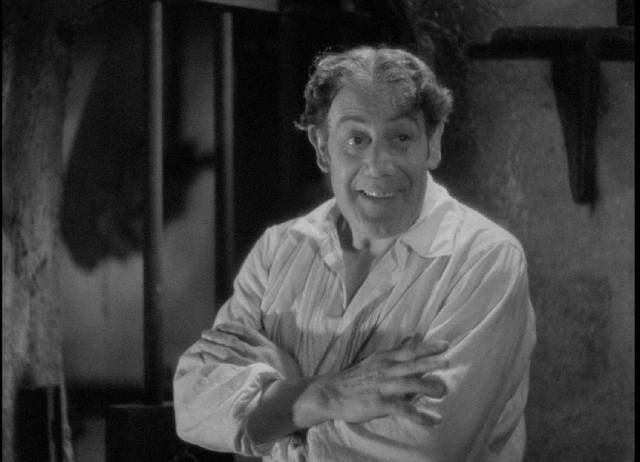
Sweeney Todd: The Demon Barber of Fleet Street (George King, 1936)
Given how well Slaughter made the transition to the screen, and the success of this first effort, King quickly followed Maria Marten with another adaptation of one of the actor’s signature stage productions, Sweeney Todd: The Demon Barber of Fleet Street (1936). Once again, the censors imposed limitations which required toning down the full-blooded stage version – although much is implied, the barber only gets one on-screen murder and the particular method of disposing of his victims with the help of Mrs. Lovatt (Stella Rho again) is left to the audience’s imagination, which because of the play’s notoriety isn’t really a problem.
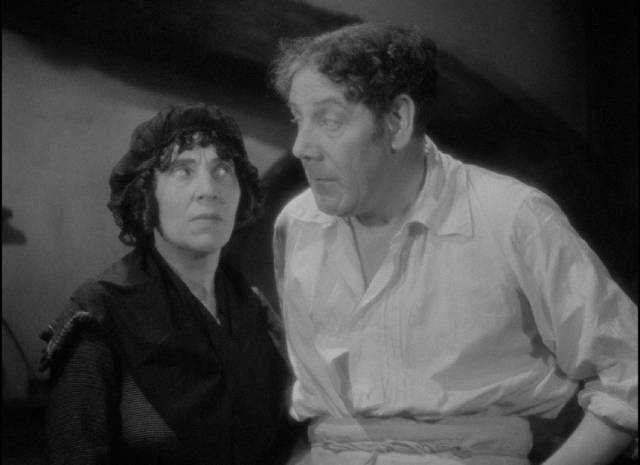
Once again, the story proper is introduced by a framing device, though here rather than establishing the Victorian theatrical setting, we get a glimpse of contemporary London traffic, a bustling street, and a customer entering a barbershop where, as he settles into the chair, the barber mentions that this is the very same shop where a hundred years earlier the infamous Sweeney Todd plied his trade. As he strops his razor, the barber tells his customer the story. This undermines the horrific nature of the tale, transforming it into a kind of amusing anecdote, which along with the oblique treatment of the violence would make it more palatable to the censors.
Slaughter responds to this lighter tone with a more playful performance, joking with his customers about “polishing them off” as he fondles his straight razor with fetishistic glee. His villainy in Maria Marten had been an element of a deeply ingrained class structure, but here Sweeney is an archetypal monster, driven by greed – he takes young apprentices from the poor house at a guinea each, bumping them off quickly before ordering another. In addition to practising murder and theft, he hopes to corrupt Johanna (Eve Lister), the innocent daughter of ship-owner Stephen Oakley (D.J. Williams again), who has forbidden her romance with Mark (Bruce Seton), who lacks the necessary dowry. This latter plot thread takes the film on a lengthy diversion, which proves a bit more uncomfortable than Sweeney’s gruesome crimes.
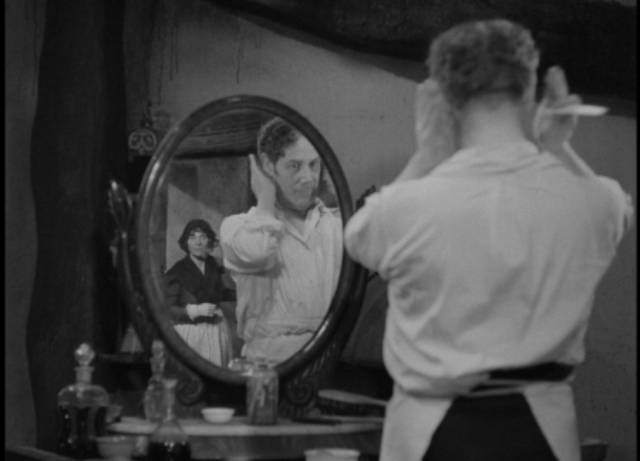
Mark sets sail for the Empire’s colonies in Africa, where he and the ship’s crew come across an outpost being attacked by “savages”. With their guns against the natives’ spears, the outcome is inevitable, with the Africans slaughtered – but not before they’ve fatally wounded the local white trader. This man, grateful for Mark’s killing of the native who has killed him, gives the young man a valuable string of pearls which is more than enough to pay Oakley for Johanna’s hand.
Back in England, before going to Oakley, Mark stops in at the barber shop for a shave. Seeing the pearls, Sweeney uses his trick chair to deposit his customer in the cellar, but Mark manages to escape before having his throat slit. From here, everything falls apart for Sweeney – he falls out with Mrs. Lovatt, killing her, kidnaps Johanna, and finally falls victim to his own trick chair as the shop burns and the young lovers are reunited. At which point, back in contemporary London, the barber’s customer flees the shop and runs off down the street.
*
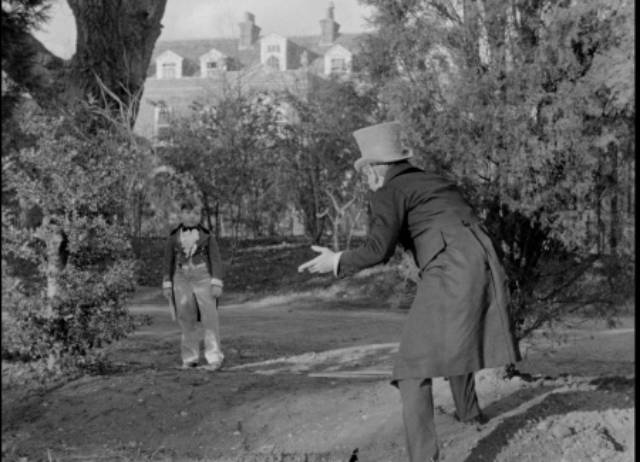
The Crimes of Stephen Hawke (George King, 1936)
For their follow-up, King commissioned a new script in the old melodramatic mould, with mixed results. Coming up short, The Crimes of Stephen Hawke (1936), again directed by King himself, required some post-production padding. This time, the frame has even less to do with the story proper; it opens with a radio broadcast in which the satirical duo of Flotsam and Jetsam (B.C. Hilliam and Malcolm McEachern) perform an interminable topical song before the announcer introduces Slaughter to talk about his latest movie, a “new old melodrama”. It’s a relief when we finally dissolve to the opening scene, which is so shocking that it’s surprising it got past the censors.
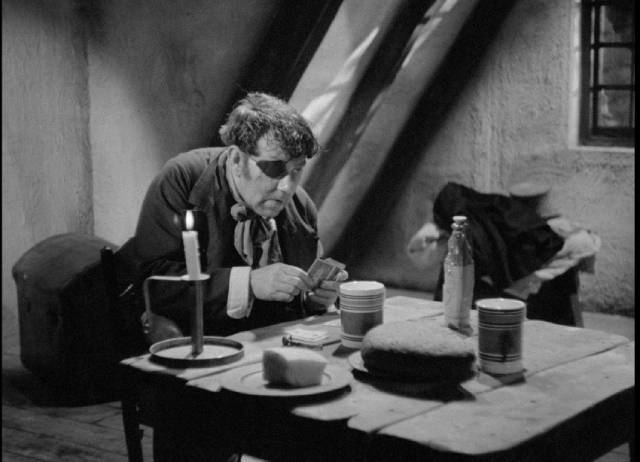
Slaughter plays a notorious thief and murderer nick-named The Spinebreaker after his preferred method of dispatching his victims. Lurking in the grounds of a mansion, he’s spotted by a little boy who speaks to him with an obnoxious tone of superiority. As the intruder lures the boy closer, we cut to his nanny nearby. There’s an off-screen scream and the nanny, other servants and the boy’s father rush to see what’s happening and discover the boy lying dead on the path, his spine broken. This casual killing of a young child by a grinning criminal is pretty extreme for the time and sets an odd tone which seems as much black comedy as dark melodrama.
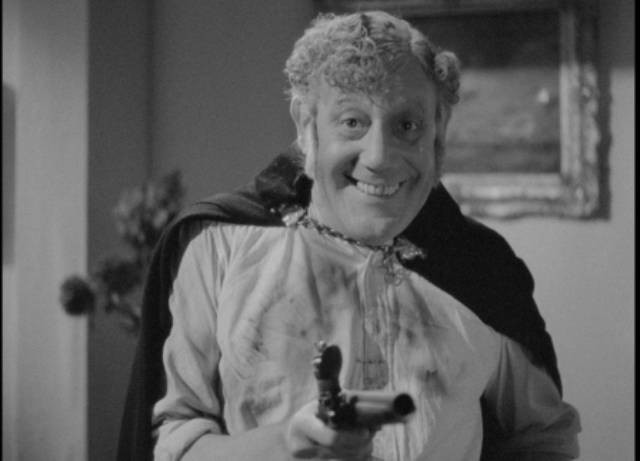
We quickly learn that the killer has a respectable identity as businessman Stephen Hawke, who has a disturbingly strong attachment to his adopted daughter Julia (Marjorie Taylor), who’s in love with Matthew (Eric Portman), the son of his business associate Joshua Trimble (D.J. Williams once more). The narrative is eventful and rushed – Trimble discovers Hawke’s secret identity and is quickly dispatched; Matthew tricks him into a confession, but because he’s in love with Julia he doesn’t expose the monster; Hawke and his faithful sidekick Nathaniel (Ben Soutten) hit the road with Matthew in pursuit; Hawke gets himself arrested for petty theft in order to hide out in jail, eventually escaping and heading home; there are more killings and a final showdown in which Hawke, like Corder, goes mad, holds the police at bay with a pistol, flees to the roof and falls to his death, surviving just long enough to tell Julia that he’s not her real father. Strangely, it ends with a tender moment as Nathaniel cradles Hawke’s head and weeps over his friend … as we return to the radio studio to discover that Slaughter’s telling of the story has put the announcer to sleep.
*
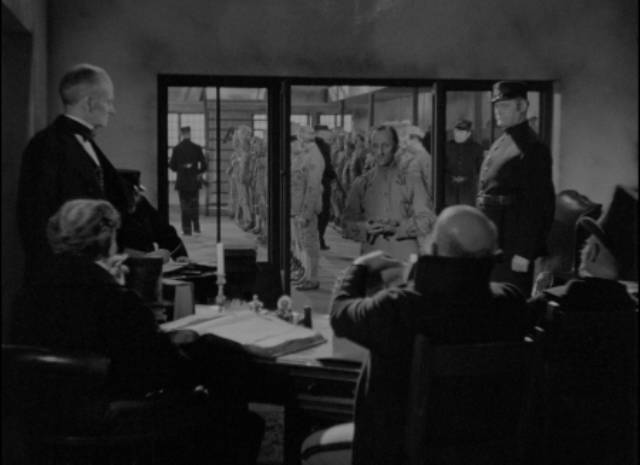
It’s Never Too Late to Mend (David MacDonald, 1937)
The following year, the pair returned to authentic Victorian melodrama with an adaptation of Charles Reade’s polemical novel and play It’s Never Too Late to Mend (1937), this time directed by Scottish-born David MacDonald, who had learned filmmaking in Hollywood as an assistant to Cecil B. DeMille. An expose of the brutalities of the prison system, the novel supposedly prompted Queen Victoria to demand reforms; in the hands of King and Slaughter, it provided an opportunity to return to the class-based villainy of Maria Marten, here with added relish as Slaughter literally twirls his moustache to emphasize his perfidy.
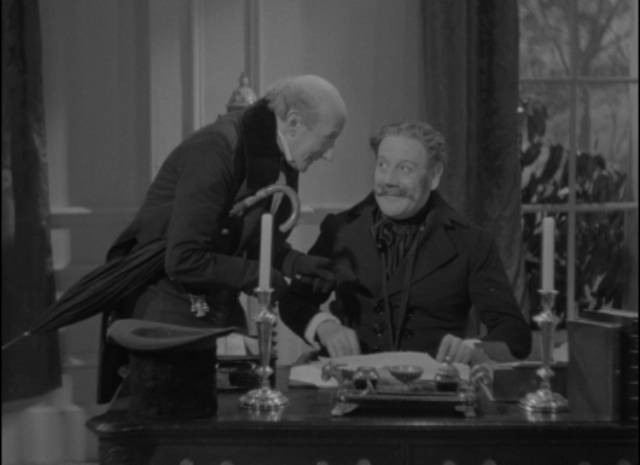
Squire John Meadows is a man utterly corrupted by his privileged position as local magistrate and head of the committee in charge of a prison. He lusts after Susan (Marjorie Taylor), daughter of farmer Merton (D.J. Williams, an essential member of the Slaughter ensemble), who is in serious debt. Meadows helps Merton with his troubled finances, seeking to establish an obligation which will force Susan into marriage. But she loves Tom Robinson (Jack Livesey), a local farm-worker who has too little money to become an acceptable suitor. When Meadows uses his position to frame Tom for poaching, his friend George Fielding (Ian Colin) steps in to take the rap. With George sent to prison, Tom heads for the colonies to make his fortune.
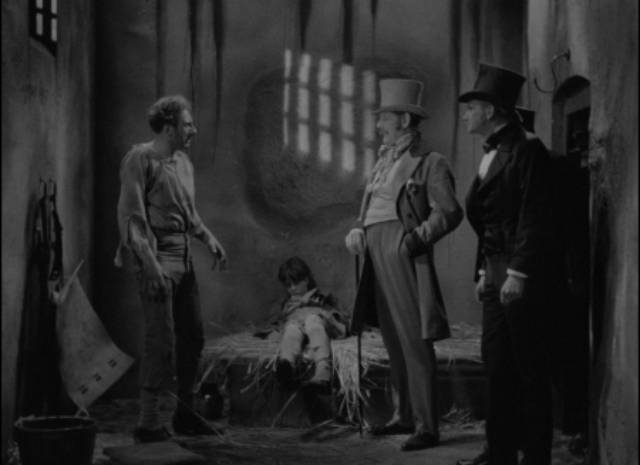
Meadows arranges for any letters from Tom to Susan to be intercepted and also starts rumours about him living a debauched life overseas and marrying; with her father’s debts becoming intolerable, Susan reluctantly agrees to marry Meadows to avert disgrace. But before Tom returns and things come to a head, there’s a long diversion into the prison where George and numerous others are subjected to what amounts to senseless torture – rather than attempting to reform inmates, many of whom are there simply because they’re poor, the institution exists merely to punish with unrelieved brutality. And this is something which gives Meadows and his fellow governing committee members a great deal of pleasure, dressed up in religion and moral complacency.
With Tom back from the colonies, carrying a hefty sum earned in the gold fields, and George out of prison, things rush to a conclusion in which once again Slaughter’s villain quickly descends into madness, pulls a pistol on a roomful of characters, and ends up being dragged away to his own prison where he’s subjected to the tortures which had so amused him when he was in charge.
*
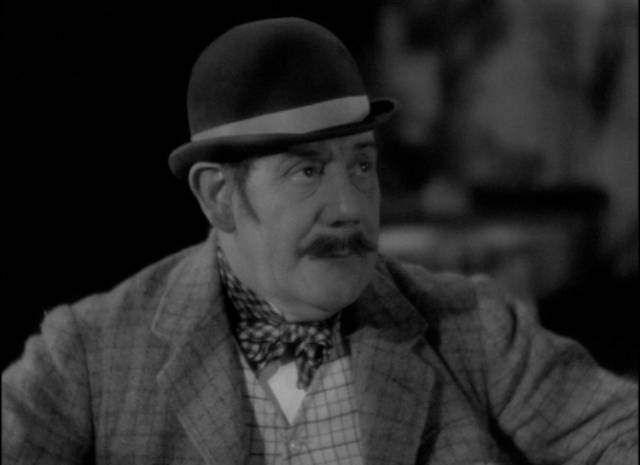
The Ticket of Leave Man (George King, 1937)
Based on an 1863 play, The Ticket of Leave Man (1937) also involves an innocent man framed for a crime and sent to prison, and an elaborate scheme by a villain to entrap a vulnerable woman. And Slaughter once again has a dual identity as James Dalton, the Tiger, a vicious criminal with a penchant for garroting his victims, and as Mr. Purvis, the kindly head of a charity devoted to helping former prisoners re-establish themselves in a hostile society. Infatuated with singer May Edwards (Marjorie Taylor), he frames her lover Robert Brierly (John Warwick) with some forged banknotes, sending him to prison so that Dalton can pursue May unhindered.
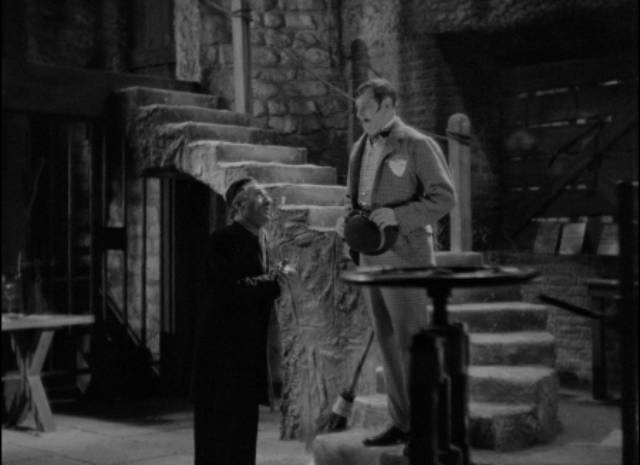
As a model prisoner, Robert is released early on a ticket of leave (an early form of parole), but this stigmatizes him and makes any kind of normal life impossible. Assuming the identity of May’s brother, he manages to find work in the offices of her benefactor Joshua Gibson (Peter Gawthorne), where he quickly becomes a valued employee. But when Dalton shows up and passes some forged financial documents, the crook recognizes Robert and frames him once again. The young man can only clear himself by exposing Dalton, who uses his position as head of the charity to trap ex-convicts into a continuing life of crime. Robert plays the part, agreeing to do a job for Dalton but notifying the police. And yet again, Slaughter’s character cracks, pulls a gun and rants his way to doom.
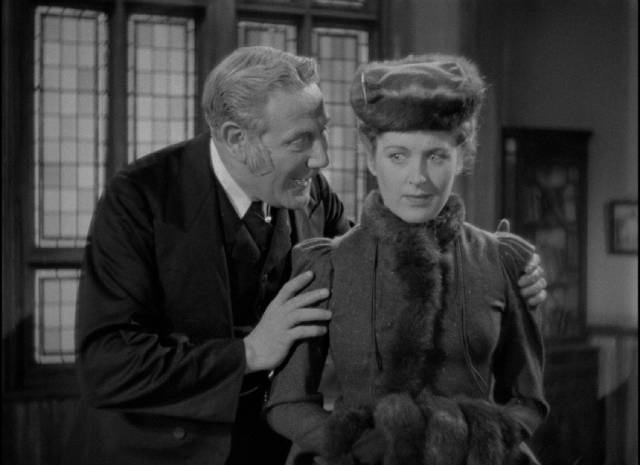
But before that end, the villain has proved even more extreme than usual, dispatching his partner in the forging operation and setting fire to the office with his henchman locked inside – Dalton gloats through the door as the man is burned alive. Smooth and arrogant in both his guises, Slaughter’s Dalton and Purvis represent his most fully realized villain yet, a man happily devoid of conscience who is skilled at playing his social role in a way which fools everyone except Robert and May.
While this is one of the best-constructed films in the set, an awkward note is present in the character of Melter Moss (Frank Cochran), Dalton’s counterfeiting associate. It’s not that Cochran gives a bad performance – he’s actually very good – it’s that Moss is a gross caricature of Jewish venality along the lines of Oliver Twist’s Fagin, out-dated in a way which the rest of the story isn’t.
*
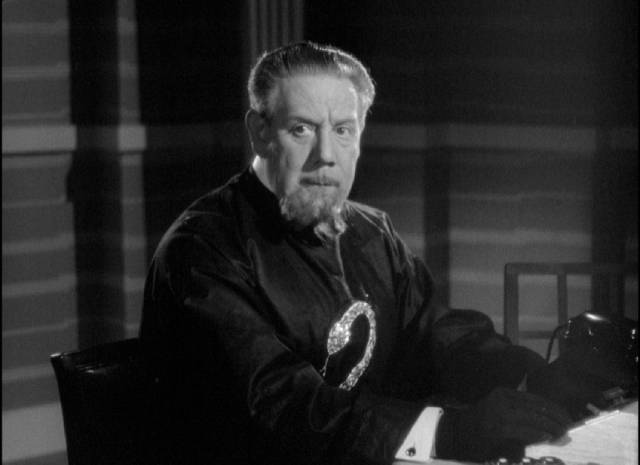
Sexton Blake and the Hooded Terror (George King, 1938)
George King’s Sexton Blake and the Hooded Terror (1938) is something of an outlier in the set, not only as the only film with a present-day setting, but also because Slaughter is a secondary character. Based on a long-running series of stories and novels about private detective/agent Sexton Blake, it suffers from his blatant similarity to Sherlock Holmes. The character first appeared in 1893 in a story by Harry Blyth, just six years after Holmes appeared in Arthur Conan Doyle’s A Study in Scarlet, and two years later became a house character for the Amalgamated Press, with around two-hundred authors eventually producing over four-thousand stories by 1978. I haven’t read any of those stories, but judging by King’s movie, Blake is a pulpy knock-off of Holmes, stripped of elegance and depth, down to his residence in a Baker Street flat which he shares with a sidekick named Tinker – a comic-relief former street orphan, rather than Holmes’s middle-class companion Doctor Watson. Again, gauging by this film, Blake is less intellectual than Holmes, more of an action man like James Bond.
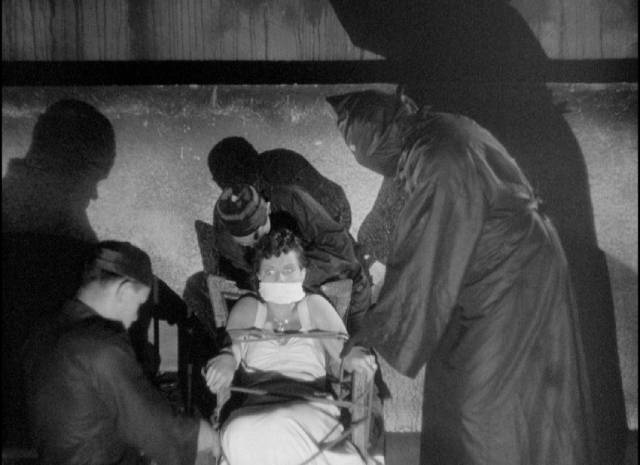
Like a Bond story, the film has its hero working to defeat an international criminal organization called the Black Quorum – think SPECTRE by way of Sax Rohmer – whose operations stretch from Hong Kong to London and Paris. In a prologue, a British agent gets wind of their plans and dispatches a message back to London before being killed. In retrospect, this is a startling moment because the agent, named Granite Grant, is played by David Farrar very early in a career which would include three films by Michael Powell and Emeric Pressburger (Black Narcissus [1947], The Small Back Room [1949], Gone to Earth [1950]) as well as two movies in 1945 in which he played Sexton Blake himself. Regarding the latter, he would seem to have been a better choice than the rather dull George Curzon, who is top-billed in King’s film, his third appearance in the role.
Slaughter plays Michael Larron, a wealthy stamp collector whose secret identity is the head of the Black Quorum. There’s less scope here for his ripe style of villainy and he gets far less screen time than usual as the story follows Blake’s efforts to uncover the organization, first operating with a London casino as a front, then in Paris where Larron has a torture dungeon full of snakes. Although there are occasionally striking visual touches (the Quorum meet while dressed in black Klan robes), the by-play between Blake and Tinker is tedious and, surprisingly, the stars are outshone by Greta Gynt, a Norwegian-born actress in her early twenties, who commands the screen as French agent Mademoiselle Julie.
*
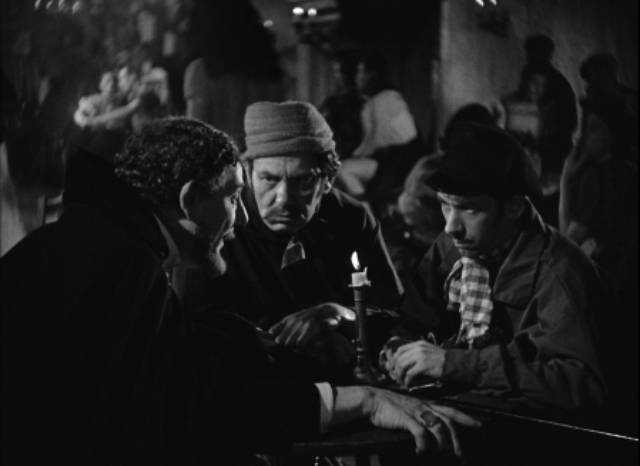
The Face at the Window (George King, 1939)
Although the British film industry was is a very poor state by the end of the decade and the quota system was collapsing, with even less money available for production, King and Slaughter’s next collaboration was one of their best – and best received – films. The Face at the Window was also the sole outright horror film made by the pair. Based on an 1897 play by F. Brooke Warren, it’s set in 1860 Paris as the city is terrorized by a killer known as Le Loup, believed to be a werewolf, whose crimes are accompanied by howls and the appearance of a monstrous face at the victims’ windows.
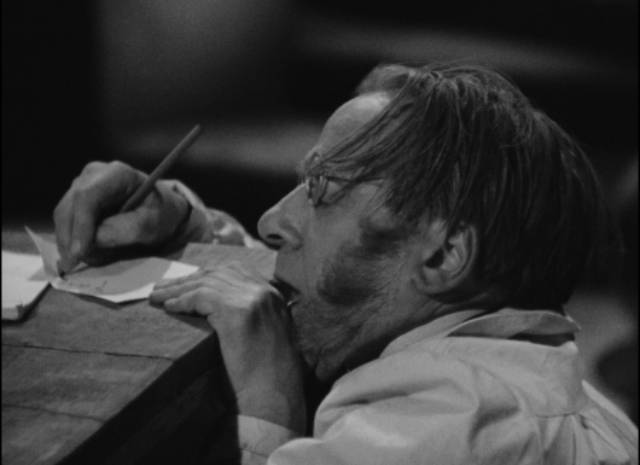
We learn quickly that the killer is Chevalier Lucio del Gardo (Slaughter of course), a venal aristocrat whose crimes are motivated by greed. As for the monstrous spectre, he turns out to be the Chevalier’s deformed step-brother (Harry Terry), who’s kept in a cage in a dank cellar beside the Seine, brought out to distract the villain’s victims so he can sneak up behind them and stab them in the back. The core of the story, though, is del Gardo’s desire for Cecile de Brisson (Marjorie Taylor once again), daughter of banker M. de Brisson (Aubrey Mallalieu), who naturally is in love with her father’s clerk Lucien Cortier (John Warwick), who just as naturally is too poor to be a viable suitor.
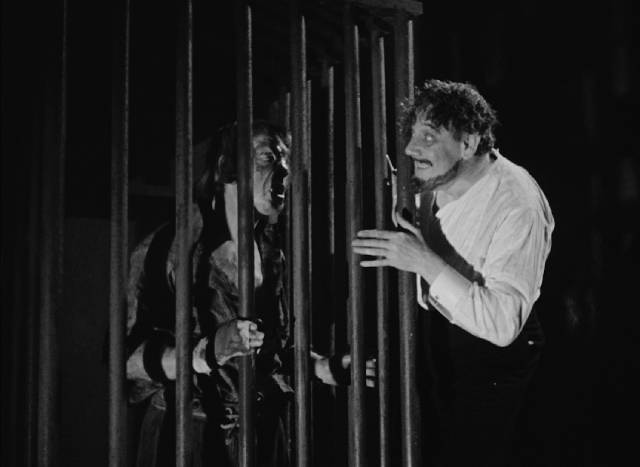
While the narrative elements are so familiar, the Gothic trappings are realized with impressive style, and Slaughter is fully back in control after almost being sidelined in Hooded Terror. To top it all off, there’s the vaguely science fictional element of Professor le Blanc (Wallace Evennett)’s experiments with electricity, in which he has managed to temporarily revivify dead animals so that they can complete their final, unfinished actions – a process which is used (albeit faked) to expose the Chevalier at the climax, triggering Slaughter’s signature abrupt descent into madness and confession.
The Face at the Window is firing on all cylinders, with King and Slaughter at the top of their game, ably supported by their established technical team of production designer Philip Bawcombe and cinematographer Hone Glendinning. The film ranks with the Universal classics of the early ’30s.
*
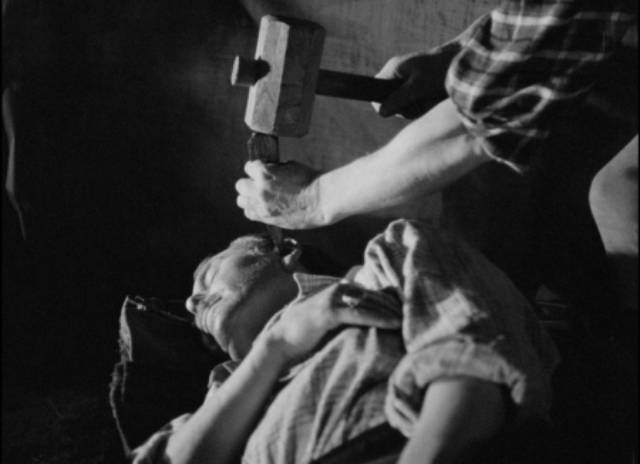
Crimes at the Dark House (George King, 1940)
Almost as good is King and Slaughter’s final collaboration, Crimes at the Dark House (1940), a very condensed adaptation of Wilkie Collins’ hefty Victorian doorstop The Woman in White. While the novel is a sprawling mystery with a kind of proto-detective unravelling a complex plot, the adaptation strips much of that away and focuses on the villain. We never actually know his true identity, but his motives are clear. The film opens in the gold fields of Australia as a lurking figure sneaks into a prospector’s tent, kills the man and steals his gold and his identity.
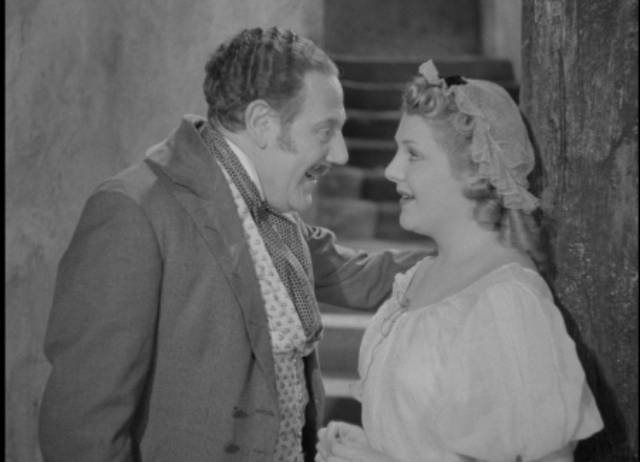
It seems that a literary pedigree could enable filmmakers to slip things past the censors which would otherwise have been forbidden. In this case, the opening murder is shocking even by today’s standards, not graphic but conceptually appalling. Armed with a large wooden tent peg, the murderer places it against the sleeping man’s ear and hammers it into his brain. With this, we know all we need to know about the man who shows up in England in the guise of Sir Percival Glyde (Slaughter) to take possession of a country estate which the dead prospector had just inherited. The real Sir Percival had been away for more than twenty years and the estate’s servants consider him much changed by his experiences, but accept the new arrival as their real master, although housekeeper Mrs. Bullen (Margaret Yarde) does give him a suspicious look as he all-but drools over housemaid Jessica (Rita Grant).
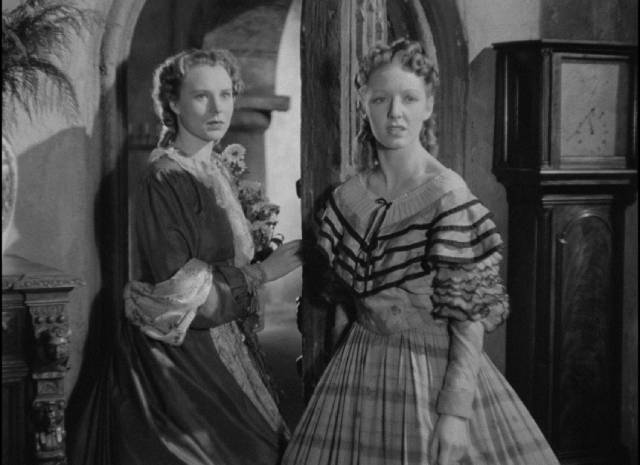
Glyde quickly discovers that his “father” died broke and the estate is deeply in debt; his dreams of easy wealth dashed, he has to find a new fortune quickly. As it happens, the real Sir Percival had long been betrothed to heiress Laurie Fairlie (Sylvia Marriott), who after all these years has no interest in him – in fact, she loves drawing instructor Paul Hartwright (Geoffrey Wardwell). Complications arise when he’s accused of having a daughter by a woman he abandoned before going to Australia; that woman, Mrs. Catherick (Elsie Wagstaff), quickly realizes that he’s an imposter. Mrs. Catherick’s acquaintance Dr. Fosco (Hay Petrie) blackmails Glyde into accepting him as an accomplice in his money-making schemes.
Problems rapidly arise – Jessica becomes pregnant and is dispatched in a reprise of the murder in the Red Barn; at her uncle’s insistence, Laurie goes through with the wedding, but despite Glyde’s pressure she refuses to sign over her fortune; with Dr. Fosco’s help, Glyde concocts an elaborate scheme to switch Laurie with Mrs. Catherick’s daughter Anne (Marriott in a dual role), who is dying, and lock Laurie away in an asylum as Anne is buried in her place. Glyde becomes increasingly unhinged and murderous as things go wrong, and it all ends very badly as he tries to destroy the only conclusive evidence that could expose him as an imposter.
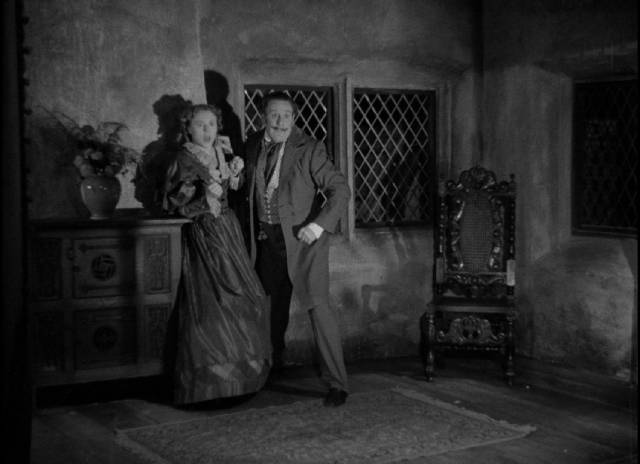
Crimes at the Dark House is almost a compendium of Slaughter’s villainy from all the films he made with King and he relishes every moment, giggling maniacally as he kills, puffing up with righteous indignation when accused of being a fraud, simpering lasciviously with the willing Jessica as he indulges his carnal appetites. But he’s become much darker and more troubling – once he arrives in England after the brutal opening murder, Glyde seduces and murders the maid, but that echo of Squire Corder’s seduction of Maria Marten here expands into the marital rape of Laurie; the murders of her double Anne Catherick and her mother; having Laurie locked up in a madhouse; then attempting to rape her sister Marian (Hilary Eaves) – the playfulness has gone entirely from the villainy. It’s a fitting end to the King-Slaughter partnership, the destination towards which the entire sequence of films has been moving. Although both continued to work in film and television, these eight features remained their most significant creations, and Indicator’s four-disk set does an excellent job of raising them out of relative obscurity.
Frequently dismissed during their original release and since, they prove to be enormously entertaining and skilfully made examples of a very particular dramatic form, with Tod Slaughter himself being the exemplary avatar of that form. By conventional standards of film acting, his performances shouldn’t work; having honed his style through decades of repertory theatre, Slaughter had established a rapport with the live audience who through physical proximity became complicit in his villainy. But this is a kind of acting which is antithetical to the screen, where the camera stands between actor and audience, and yet Slaughter manages to use the camera to reach out and engage in a very similar way. He shuns cinema’s innate realism and manages to establish a direct connection with the viewer; we embrace his villainy and relish his inevitable fate, recapturing the archetypal pleasures of these moral tales which allow us to revel in ripe corruption with a clear conscience.
*
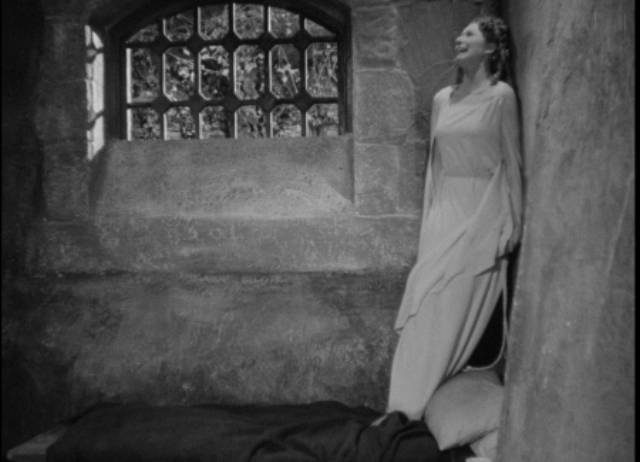
Given the films’ origins in quick, cheap productions, they look quite stunning on disk, with all but one scanned in 4K from original nitrate negatives (Sexton Blake and the Hooded Terror was scanned from a dupe positive). Contrast is excellent and there’s a great deal of fine detail in the images, highlighting the work which went into costumes and sets (it’s worth noting that Crimes at the Dark House was the first credit for art director/production designer Bernard Robinson who went on to do wonders with small budgets on Hammer’s Gothic horrors); humble they might be, but these Slaughter/King collaborations display an impressive level of craft. For the most part, audio is clean and clear.
Each disk contains two features, but since they all average about sixty-five minutes this isn’t a problem. Each film gets a commentary track by a pair of enthusiastic fans – Stephen Jones and Kim Newman on two, Kevin Lyons and Jonathan Rigby on three, Kim Newman and David McGillivray on one, Josephine Botting and Vic Pratt on one and Botting and Dave Thomas on one – which provide a lot of detail on Slaughter, the filmmakers, the stage origins of the material and the context of production.
In addition there are over two-and-a-half hours of old newsreels and shorts featuring Slaughter, and interviews and visual essays which provide personal and critical perspectives on Slaughter and his theatre and film career, plus a 120-page book of new and archival material.
There were a lot of excellent releases in 2023, but The Criminal Acts of Tod Slaughter is one of the most impressive and by far my personal favourite.
*
When I ordered the set directly from Indicator, it came bundled with a copy of the 2019 biography Mr. Murder: The Life and Times of Tod Slaughter by Denis Meikle, Kip Xool and Doug Young, which proves an excellent supplement to the set, giving a rich, deeply researched account of the actor’s life and work which further illuminates these movies made late in his career.
Comments